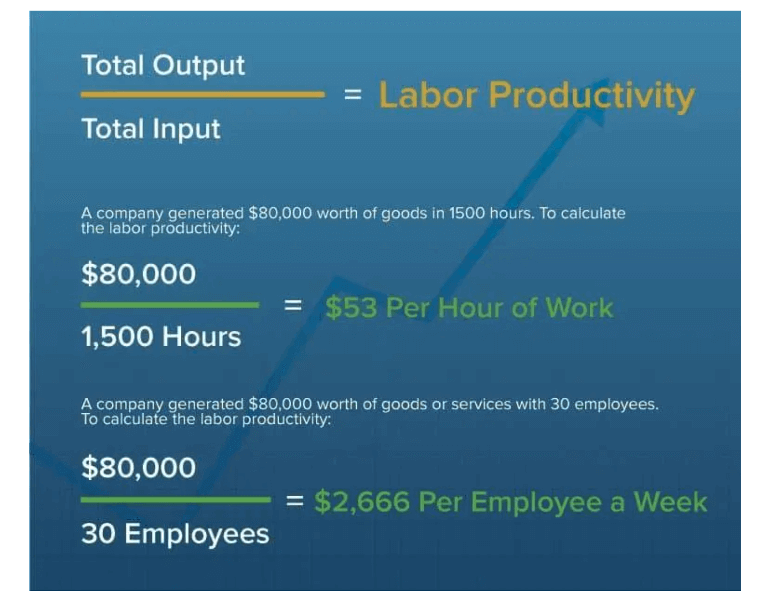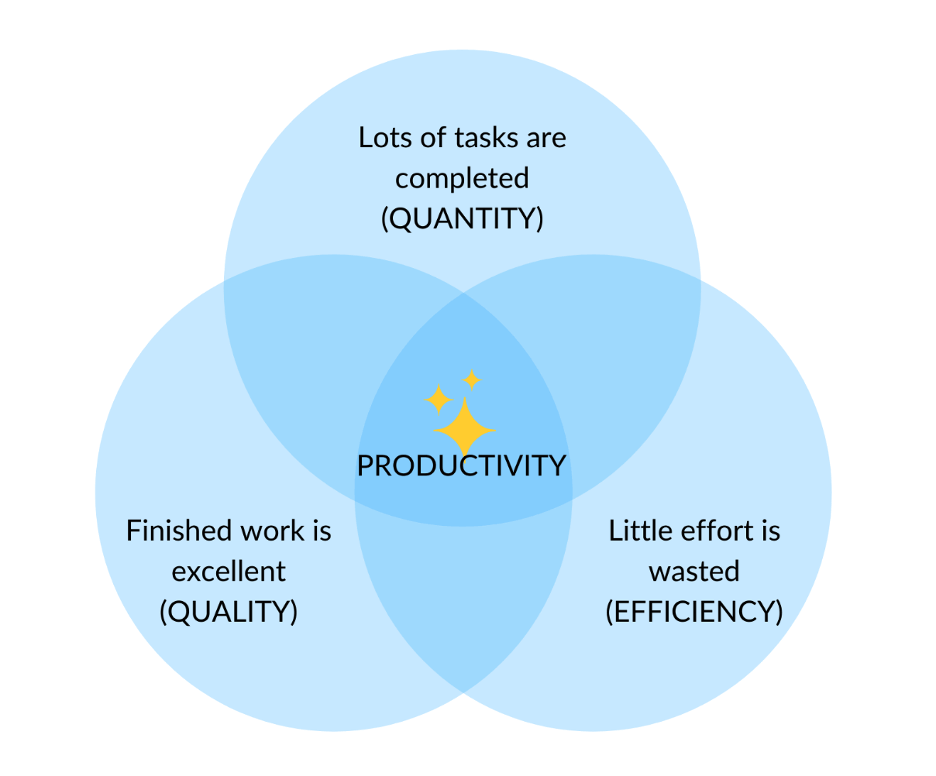There’s no sugar coating it – today’s world of work is hugely affected by global economic and geopolitical uncertainty, volatile markets, technological disruptions and new ways of working. It’s a huge challenge for organizations to second-guess how to operate so that they are successful long term, and sustainable. And the lynchpin of that success is how productive employees are.
Our research has found that the current picture of employee productivity seems less than rosy, with gains over the last few years dissipating. What are the reasons for this?
- Employees are burnt out, poorly supported by systems that cannot adapt to change quickly enough
- Business leaders are struggling to provide stability, which leads to diminishing employee trust in their organization – particularly for frontline workers
- When employees cannot see a positive future in their organization, and fear for their jobs, they struggle to deliver sustainable productivity.
We know that employee experience is inextricably linked to how successful organizations are and how they grow. So despite all those external factors that you cannot control, ensuring your workforce is engaged and healthy, and enabling them to do their best work, will help boost productivity.
Let’s take a deeper dive into how to make your employees more productive, including three groundbreaking suggestions that you may not have considered.
Free eBook: 2025 Employee Experience Trends Report
What is employee productivity?
Employee productivity used to be measured as the amount of work an employee can get done within a certain period of time.
This little formula was used to calculate employee productivity:
Productivity = output (what is created) / input (hours spent and resources used)

However, these cold, hard figures seem only to relate to individual employees and their achievements, whereas from a bigger-picture perspective, employee productivity is about the health of the whole organization and its ability to thrive and grow.
Let’s look instead at this diagram. What do you notice?
Work (and lots of it) is being completed, the quality is excellent, and employees are not wasting their efforts, (and presumably resources).
More products are being manufactured, more services delivered, more customers satisfied, and so on. When productivity is high, it’s likely that your systems and processes are set up well, and that your employees have everything they need to maximize their potential.
And achieving high productivity is something your people can feel proud of, relating positively to employee engagement; employees are highly motivated to maintain their team’s productivity, and take ownership of their high standards of performance.
In short, employee productivity is much, much bigger than an equation – it’s the sum total of a great employee experience.
How to boost employee productivity
When you search up advice for improving workforce productivity, chances are you’ll find the following ‘Top 10’ strategies put forward for enhancing motivation, wellbeing and efficiency:
1. Set SMART goals and clear expectations
Employees need to understand their roles and responsibilities and SMART goals can help to achieve this.
2. Invest in training and development
Keep employees up-to-date with industry skills and trends, and develop their careers.
3. Ensure a culture of feedback
Measuring employee productivity using feedback data will provide you with insights to help drive improvements and recognize and reward achievements and high performance.
4. Prioritize employee engagement
Include your people in decision making, and regularly listen to your employees with surveys and multichannel listening, then act.
5. Foster a supportive and inclusive company culture
Open communication, collaboration, and a sense of belonging for everyone makes for a positive work environment and culture.
6. Tool up your workforce
Give everyone the right resources and tech to do their jobs efficiently – including project management software to support workplace productivity.
7. Leaders must model best practice
Leaders’ focus must be around their own work ethic and overall productivity, with commitment to setting high standards and continuously learning and improving.
8. Streamline work processes
Automate tedious repetitive tasks (AI is your friend here), freeing up time for more valuable tasks, and identifying and eliminating pain points and inefficiencies in workflows.
9. Manage work-life integration
Insist employees take restorative breaks and vacations, and arrange flexible working according to individual needs.
10. Take employee health and wellbeing seriously
Offer physical and mental health wellness programs, stress management and healthy living incentives (don’t forget your remote workers).
These strategies – which empathetic and progressive 21st-century organizations are doing anyway – will go a long way to helping create a more motivated and productive workforce.
However, we think you can go even further to improve employee productivity, and enhance your employees’ experience at the same time.
Three ways to improve productivity that you may not have thought of
1. Optimize onboarding
Onboarding isn’t a single moment in time, but a journey that sets the trajectory of success for the employee, the team, and the organization. In 2023, we discovered that onboarding was a lower strategic priority than talent attraction and hiring. This was a surprise: we know it’s crucial for employee productivity because, done well, it provides new hires with the necessary tools, resources, and knowledge to perform their job effectively from the start. It aligns them with the organization’s culture, goals, and expectations, fostering a sense of belonging and engagement that boosts motivation and performance long after their opening months of employment.
We suggest that you map your employees’ onboarding journeys to identify the experiences that have the most impact on new hires, then work to make those experiences better.
Your onboarding strategy needs to be organization-wide – connect with every team or department that can help your new hires succeed from the start.
Align these teams with the metrics that inform your overall organizational goal (i.e. employee productivity). This could be ramp time, performance outcomes, engagement scores, retention or more.
2. Empower frontline workers
Your frontline workers are gold, yet until now have been sorely overlooked. They typically engage with customers first, so it’s in your best interests to support them. When frontline workers feel safe to voice their opinions, are recognized, and their needs are met, they have higher job satisfaction, are more likely to serve customers, patients, and other members of the public enthusiastically, efficiently – and productively.
To support your frontline workers you need to make a strong connection between your customer experience (CX) and employee experience (EX), and the data from both (you can use a tool such as CrossXM to do this). This will show up gaps where you’re failing your frontline workers, and you can step in to close them.
Don’t just leave your frontline workers out on a limb; they are the ones who know your products and services inside out and they want to help make improvements. Talk to them as well as listen (with frontline feedback tools) – chances are, they are the ones able to help you solve your company’s biggest challenges.
Most importantly, make sure your frontline employees feel as psychologically safe as your other employees, so that they feel free to share ideas and feedback, make mistakes, disagree with the status quo and ask for help – the foundation for improving employee productivity.
3. Embrace AI and rebuild employee trust
It’s already happening. AI is transforming every business function. According to a report by the International Monetary Fund on AI and the future of work, up to 60% of all business roles will be impacted by AI. Our own research shows that it’s the people who believe in their organizations and trust them that are more likely to adopt AI tools to help them work more productively.
To win over employees, and mid- and first-level managers, and gain their trust, senior leaders (who are the ones most excited about the potential of AI) must communicate that AI will be used to enhance their people’s capabilities and experiences, not replace them.
Every conversation about AI needs to begin not with technology, but with principles and ethics, aligned with your organization’s principles and values. Employees will be more open to embracing AI when they see that it will free them from mundane tasks to work on more interesting, valuable ones.
Involve your employees in redesigning work processes. Which tasks can be fully automated? Which can be supported by AI? Which need full human operation? When employees have had a say in how they want to work with AI, they realize its potential benefits, leading to more successful acceptance.
The role of leadership in employee productivity
In the current, turbulent work climate, able leaders who can keep their people and teams engaged, healthy and productive despite challenging external factors are in high demand.
Today’s leaders need to be:
- Enthusiastic – particularly around communicating the vision and benefits of using AI
- Reassuring – that adoption of AI won’t replace people
- Good communicators – to keep employees informed of change
- Trustworthy – so that people feel psychologically safe to speak their minds and suggest improvements
- Data led – using insights from key metrics and labor statistics to make evidence-based decisions rather than guesswork
How work life balance influences employee productivity
Employee work life balance must be seen as a wellbeing issue: it’s how your employees manage their professional and personal responsibilities so that they do a good job, yet have enough rest and leisure time to recharge. A healthy work life balance makes your employees more engaged, likely to stay, and more productive.
There’s no magic formula for balancing work and life, nor a specific amount of time you should allot to one versus the other. Work-life balance happens organically when employees are equally fulfilled by their personal lives and professional lives.
And again, work life balance will look different for everyone. Helping employees achieve a work-life balance takes attentive listening to your people, as well as a flexible and iterative approach to find what works best.
How to address burnout
As we said at the top of the article, the current state of the world of work has caused employee burnout. Burnt out employees lack energy and focus, which naturally leads to a drop in labor productivity.
So what can you do about burnout?
Behavioural psychologist Dr Ben Granger highlights three things that business leaders can do to beat workplace burnout:
1. Improve mental health programs
“If an employee is having a mental health challenge, they can’t give their all. And that’s what companies need their employees to do, is give their all.” Free up time during a worker’s day for them to engage with mental health support initiatives.
2. Focus on communication
During the pandemic, leaders and employees were working remotely, constantly checking in with one another, and communicating more than ever. “During that period, we saw trust in senior leadership and ratings of communication skyrocket”. Post-pandemic, that communication has lessened, and burnout increased.
3. Rebuild employer-worker trust
Especially among your frontline workers. When employees trust their managers enough to speak honestly and openly about their challenges, know they’ll be listened to, and action will be taken, this can reduce burnout symptoms.
How Qualtrics can help with employee productivity
Qualtrics XM for Employee Experience, gives you a single, holistic solution to build high-performance, productive teams, improve manager effectiveness, measure productivity beyond engagement, and understand what truly matters to your people – from the frontline to the C-suite.
You’ll be able to:
- Set goals for your organization
- Empower managers to take the right actions at the right time and at scale
- See the full picture, with a 360-degree view of every employee touchpoint: from candidate experience, onboarding, development, to exit, bringing together every signal, across every channel
- Use powerful people analytics to identify where you should focus your investments for maximum impact.
- Increase employee productivity
At Qualtrics, we believe that human-centric thinking is the key to transforming your employees’ experience, which in turn will improve productivity. It all starts with listening, understanding, and acting on every employee experience.
Free eBook: 2025 Employee Experience Trends Report
